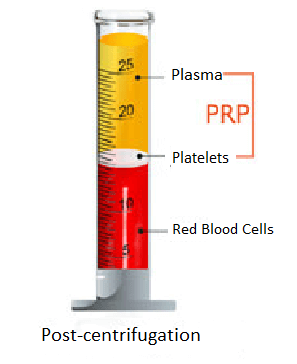Platelet Rich Plasma
Plasma Rich Plasma (PRP) therapy has emerged as an increasingly popular treatment for multiple sources of pain including osteoarthritis of the knees, back and neck injuries, ligament and rotator cuff and tendon tears as well as muscle injuries. Chronic overuse and traumatic injuries can be difficult to treat and PRP has proven to be useful where other treatments have failed.
Natural Healing
The natural healing process involves the body’s production of proteins (growth factors) that are capable of stimulating cellular growth and proliferation to repair damage. PRP accelerates this natural process by helping the body to concentrate these growth factors at the location of injury and expedite the tissue repair process as well as provide pain relief. Best of all, the PRP is obtained directly from your own body.

The Procedure
Obtaining the PRP is as simple as drawing your blood from a vein and placing it into a centrifuge to separate the blood components and concentrate the platelets in your plasma (liquid part of blood that contains nutrients, proteins, glucose, salts and enzymes). These platelets produce your own growth factors that can heal the body’s injuries and can be easily injected at the site of injury. Imaging guidance should be used to ensure that the PRP is injected at the correct location to maximize effectiveness.
Safety
Every medical procedure involving needles has risks including infection, bleeding, allergic reaction, pain at the injection site and nerve injury. As the PRP is derived from your own body, this minimizes the chances of allergic reaction and steps are taken at Tricity to minimize other risks as well. Any concerns can be directly discussed with your doctor.
Recovery time and benefits
Most people can continue their daily activities following the PRP injection. As these injections are intended to promote the body’s natural healing process, you may not notice an immediate improvement after receiving the injection. However, you may observe improvement in the area of injury after several weeks or months with continued progress afterwards.
